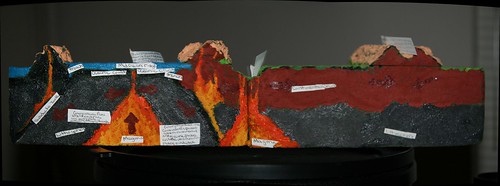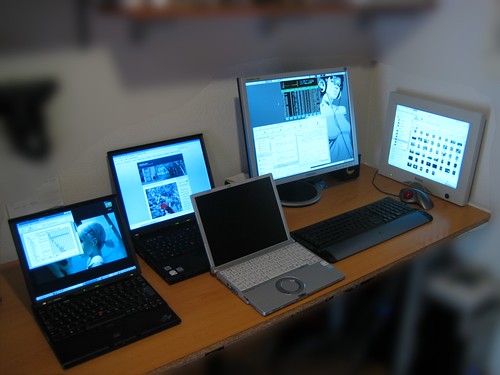I believe technology-enhanced learning environments (TELE’s) are the way of the future as technology and learning (and life, for that matter) are becoming one and the same. Constructivist learning uses technology to open doors and brings the world into the classroom. Through studying four different TELE’s our cohort has examined the theories behind the programs and has deconstructed the outcomes.
The Jasper Series
The Jasper Series used problem-based learning to engage students in solving real-world multi-step math problems. Technology was used to introduce background and visuals on the topics, as well as set up the problems and introduce questions. “The theoretical framework is consistent with constructivist theories and emphasizes generative learning anchored in meaningful contexts”, as the Cognition and Technology Group at Vanderbuilt pointed out. At a time when digital technology was just beginning to make its way into classroom the Jasper Series was played on laserdisc, an uncommon AV device, which created difficulties for those that did not have access to one, or who had to share. At best there were only a couple of machines in a classroom so individual learning was not possible, using the medium.
I believe the Jasper Series was a step in the right direction towards technology enhanced constructivist learning as it afforded the participants with a better understanding of the problems and engaged them through “generative, rather than passive learning activities”(Cognition and Technology Group at Vanderbuilt, 1992).
WISE
According to Linn, Clark and Slotta (2003), “Web-based Inquiry Science Environment (WISE) is a technology enhanced, research-based, flexibly adaptive learning environment which features modeling tools or hand-held devices.” Driven by a knowledge integration perspective WISE is aligned with scaffolding knowledge to build a solid understanding of science concepts. Students follow the lessons by walking sequentially through carefully designed web pages full of information, videos and simulations. Teachers can add to the WISE library and modify lessons to meet their needs, which is a great feature of the platform. It was discussed that these short lessons are great for helping students who need to revisit specific concepts (or who missed the lesson) as they can go through the lessons on their own. Activities and reflection moments are integrated into the lessons, where students and teachers can check for understanding. Some of the activities do not let the user move on until the task is completed correctly, even though a guess and check method can be used to accomplish the task. Learning does not effectively take place in this manner, as students may not understand why a certain answer was chosen before moving on. I can see using WISE as a reinforcement activity or when helping struggling learners walk through specific concepts.
Learning-for-Use (My World)
Edelson (2001) reported that the Learning-for-Use (LfU) model’s goal is to “overcome the inert knowledge problem by prescribing how learning activities can foster useful conceptual understanding that will be available to the learner when it is relevant.” The LfU framework of motivate, construct and refine “was developed as a way to bring the process of learning from inquiry that scientists engage in to students.” I agree that these activities are engaging and provide a wealth of possibilities, as MyWorld did, but may not be suitable for younger learners. I feel these younger learners need more focused inquiry-based activities, as they may get lost in the process or the data if not structured to fit the age group and their level of scaffolding. The MyWorld user-interface was quite advanced for novice learners. Even though the data produced was phenomenal, it did not have the usability necessary for novice users. I see the LfU mode as an ideal learning cycle that educators should desire to work towards but not suitable for every level of student.
T-GEM and Chemland
T-GEM, or using a pattern of generate-evaluate-modify uses simulation technology to enhance conceptual understanding in chemistry (Khan, 2010). Good teachers have a knowledge base of pedagogical content knowledge (Khan, 2010) as well as know how technology can be an effective tool in delivering content. Khan goes on to report that the use of computer have supported GEM by being able to process large amounts of information and view representations in multiple ways. The Chemland compilation of simulations was an excellent example of T-GEM at work. It was simple to use and very direct, not confusing the student users. I see it as a great tool for chemistry teachers as they can view multiple simulations with no expense or error. The simulations can also be use to manipulate data or experiments to points not achievable in a common 80 minute high school science class.
Synthesis
Upon reviewing these TELE’s I have a better understanding of what to look for when using technology to engage students and construct learning in a science classroom. The theories and programs used should be designed with the learner in mind, age appropriate, user-friendly, easily navigated, visually appealing and encourage reflection and evidence of learning. As mentioned in a number of the articles and throughout our group discussions, it is important that professional development is aligned with sound pedagogy and integrated with technology, as well. Teachers cannot know every program and every web site available anymore. They need the skills to assist students in the knowledge building process as well a technology use. As Kim, Hannafin and Bryan (2007) explained, “[T]echnology-enhanced, student-centered classes provide students with flexible opportunities to manage their inquiry processes and monitor their progress.” As we shift more towards technology-enhanced learning environments, it is very important that students and teachers understand the role of technology in the class and use it effectively to maximize learning. Time is short and there is so much to learn.
References:
Cognition and Technology Group at Vanderbilt (1992b). The Jasper series as an example of anchored instruction: Theory, program, description, and assessment data. Educational Psychologist, 27(3), 291-315
Edelson, D.C. (2001). Learning-for-use: A framework for the design of technology-supported inquiry activities. Journal of Research in Science Teaching, 38(3). 355-385.
Khan, S. (2007). Model-based inquiries in chemistry. Science Education, 91(6), 877-905.
Khan, S. (2010). New pedagogies for teaching with computer simulations. Journal of Science Education and Technology, 20(3), 215-232.
Kim, M., Hannafin, M.J., & Bryan, L. (2007) Technology-enhanced inquiry tools in science education: An emerging pedagogical framework for classroom practice. Science Education, 96(6), 1010-1030.
Linn, M.C.,Clark, D., Slotta, J.D. (2003). Wise design for knowledge integration. Science Education, 87(4), 517-538.





